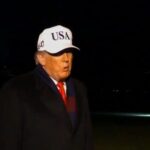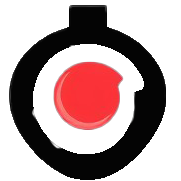There is a lot riding on Brian Niccol’s shoulders as he takes the helm at Starbucks. Barron’s, the financial newspaper, noted this week that Starbucks increased its dividend even though the brand did not have a decent fiscal fourth quarter. Unlike Boeing and General Electric, Starbucks’ new CEO, Chairman and Starbucks’ Board of Directors provided a confident earnings report on Starbucks future with a dividend hike while publicly facing the facts of troubled operations, pricing and a struggling brand.
In a recent video, Mr. Niccol delivered an inspirational message about where the Starbucks brand will be headed under his management. He spoke of the brand needing revitalization. Clearly, his first mandate will be a turnaround project.
This article is part of Branding Strategy Insider’s newsletter. You can sign up here to get thought pieces like this sent to your inbox.
Mr. Niccol noted that revitalizing the idea of the “store” as a third place is a critical piece for Starbucks. He also focused on crew members and agreed that the connection to the barista is broken and must be reset. He noted that innovation is essential, both in terms of product and store.
The message declared that there has been too much focus on Rewards Members who are not all loyal customers but customers who hope for deals. The Wall Street Journal pointed out that frequent in-store deals and online offers for Rewards customers did not contribute to revenues. Once again, deal loyalty is not real loyalty. And, yes, focusing on takeout orders over everything else seems to have been a mistake.
A large part of the message was that Starbucks is a community. Being a community is good. People need to belong. Belonging is a universal desire.
On the other hand, there was no messaging about trust or value. This is worrisome as the Starbucks trustworthy brand value equation appears to be out of whack. And, trust is crucial. People seem to have a trust deficit with Starbucks when it comes to beverage delivery. And, the focus on specialty drinks, although increasing the perception of personalization, seems to have diluted the belief in Starbucks’ exceptional beans, rich tastes and roasting skills.
There is also a problem with the idea of going back to what worked before. “Back to Starbucks” may be interpreted as going back to what worked before: this would be a mistake. Whatever worked before must be modernized to fit today’s customers and needs/problems. How this modernization will now be defined is being kept close to the vest.
Mr. Niccol stated that Starbucks would not continue to solely focus on Rewards members because Starbucks will appeal to everyone. Mass marketing is a mass mistake. Every brand needs a target audience. By not articulating the target audience, you become a mass brand. Starbucks is not a mass brand and should not appeal to everyone. When you appeal to everyone you are a brand that a lot of people like but few love.
And, just who are the audiences? A big brand like Starbucks will probably have more than one audience, depending on how you structure. There is probably going to be a difference between the take away customer and the in-store customer. Just like Mr. Niccol instituted at Chipotle with the Chipotlane for takeout orders while also focusing on in-store dining, Starbucks customers may be different audiences for takeout and in-store. Bloomberg BusinessWeek indicates that there is an additional “other” audience: Starbucks has become a “sugary teen emporium.” Messaging will be different depending on the target audience but the brand essence must always be the same. Using the Brand Journalism approach to communications is something that should be considered.
Also, Starbucks has a luxury feel. Yet, it is accessible. There was no mention of the brand’s provenance as an accessible luxury. Not just luxurious price, but as Mr. Niccol did mention, there is Starbucks’ roasting, the small batch, richer beans, expert buyers, blending and so forth. These elements can define luxury. Mr. Niccol did not mention these characteristics in terms of how these characteristics are relevantly differentiated from smaller coffee purveyors. The heritage of the Starbucks brand was missing.
The competitive set for Starbucks is probably different today than in the past. Is the competitive set Dunkin’? Other fast food options? Or is the competitive set premium coffee purveyors such as Zoka or Peets? Or is the competitive set home brewed? McDonald’s has indicated that one of its biggest competitors today is grocery.
And, while community is important for Starbucks, in today’s world, the issue is not just belonging. People want to belong and be unique. Starbucks is the perfect place for this individualism (personalization) and inclusivity (partnership) because you are part of the “community” (which needs definition) and yet your order is individual. “I want to be different just like all my friends.” My character and my collective, at the same time.
As an aside, none of the elements of Mr. Niccol’s speech will stick while the brand delivers messaging that tells us “today is a good day for coffee,” as current TV ads express. It is a waste of resources to sell the category especially when the brand is having difficulties. In the 1980s, Campbell sold the category via messaging stating, “Soup is good food.” Customers agreed. Sales of competitor Progresso rose. In the 1990s, Kellogg’s sold breakfast as the most important meal of the day. Customers agreed. They went to McDonald’s. Sell the category at your peril.
A critical element for a struggling brand facing multiple – perilous – challenges is a Plan to Win. Starbucks needs a Plan to Win.
At The Blake Project, we define A Plan to Win is a one-page document 1) for aligning a brand around its desired direction; 2) for detailing the required actions designed to implement strategies that make moving towards your desired direction possible; and 3) for stating the action metrics needed to measure progress toward that direction.
Surely you’ve heard an executive say, “Let’s all be on the same page.” Yet, rarely do organizations actually create that one page of purpose, actions and metrics. A Plan to Win is that one page.
A Plan to Win puts the brand purpose, brand promise, brand actions and brand performance metrics on a single page, so everyone – internally and externally – can really be on the same page.
A Plan to Win aligns everyone around a common roadmap of common goals and priorities, defining in a common language how the brand will win. A Plan to Win generates organizational focus. Focus is fundamental. A brand cannot be successful if it is unfocused. A Plan to Win creates focused strategic discipline.
A Plan to Win is critical for brand leadership management and enduring profitable growth. A Plan to Win integrates everything necessary for brand success across The eight P’s: Purpose, Promise, People, Product, Place, Price, Promotion and Performance.
There are three sections of the one-page Plan to Win:
Section 1 – Brand Direction: Brand Purpose and Brand Promise.
Section 2 – Brand Actions: these are the priority actions for implementing movement towards the Brand Direction. These activities are the 5 action P’s: People, Product (and Service), Place, Price, Promotion.
People: your people come first. Just because your brand is customer-focused does not mean that customers come first. Customers come second. Employees come first. Employees are the frontline when it comes to customer relationships. If your people do not believe in the brand, you cannot expect your customers to believe in the brand.
Product/Service: Products and services are the tangible evidence of the truth of the Brand Promise. A brand must be relevantly differentiated delivering superior customer-perceived value. Continuous renovation and innovation are success imperatives. Product and service renovation and innovation create news. News keeps a brand relevant and differentiated generating customer-perceived value
Place: No matter what or where the place, a brand’s place must attract, not detract, from the Brand Promise. Whatever or wherever the place, that place must be kept updated and in good repair. Nothing happens until it happens at retail, wherever the retail is located. Today, a brand’s place is fluid. Nothing can be taken for granted.
Price: Price is a customer-perceived brand cost. Price, along with time and effort, is a cost element of the customer-perceived brand trustworthy value equation. That equation is our mental accounting for assessing a brand’s relative worth. That equation is the total brand-business experience relative to the total brand-business costs multiplied by trustworthiness. Price is also a marker of perceived quality, because price influences customer-perceived quality. And, when it comes to price, remember, marketers may set the price, but the customer perceives the value. Be strategic with pricing because the price you choose affects customer-perceived value.
Promotion: everything communicates. Everything, not just your website, your retail environments or your advertising. Your labeling and your packaging are your biggest forms of communication. When you serve your product in cups, your brand is, literally, in your customer’s hands. Promotion is about creating an integrated approach to advocating on behalf of the brand. Sadly, marketers tend to understand promotion as short-term tactics generating immediate traffic and sales, such as a price deal or limited-time offer. This is wrong. Promote means to elevate to a higher level or to advance in rank or position. The purpose of all brand communications must be to elevate a brand-business to a higher position in the customer’s mind. All marketing communications are promotion aimed at elevating the brand. The opposite of promote is demote and that is actually what many marketers do with their messaging.
Your brand direction points to where you wish to go. But, how do you plan to get there? Moving towards the destination is the job of the 5 Action P’s. Those 5 actions P’s provide the know-how for getting to your desired direction. The 5 action P’s are the heart of the Plan to Win because the 5 Action P’s bring the brand’s purpose and the brand’s promise to life.
Section 3 – Brand Performance: these are measurable milestones. Your measurable milestones must address these questions:
- What are we going to do by when?
- What levels of progress will be acceptable?
- What levels of progress will be excellence?
The Performance P defines the metrics used to evaluate progress towards achievement of the brand’s purpose and promise by implementing the 5 action P’s. Measuring progress is an imperative. Meeting measurable milestones is not an option. Meeting measurable milestones is a must-do.
With a Plan to Win, you articulate your desired destination. You articulate how you intend to get there. And, you articulate how we are performing. Are we making meaningful progress in moving towards our desired direction?
Starbucks needs to have an agreed, articulated Plan to Win. A Plan to Win will be Starbucks’ strategic plan for enduring profitable growth by achieving a sustainable advantage that profitably increases customer-perceived value.
A Starbucks Plan to Win will be its single-page brand road map aligning all brand units and functions around the same goals, actions and measures, using a common language that is consistent and clear within the organization. All Starbucks stakeholders must know where Starbucks is going, how Starbucks is going to get there and how Starbucks is doing in creating more customers who purchase more often, became more loyal, generating more revenue and more profit.
Mr. Niccol knows brand turnarounds and brand builidng. A Plan to Win will be a significant advantage for success.
Contributed to Branding Strategy Insider by: Joan Kiddon, Partner, The Blake Project, Author of The Paradox Planet: Creating Brand Experiences For The Age Of I
At The Blake Project, we help clients worldwide, in all stages of development, define or redefine and articulate what makes them competitive at critical moments of change, including co-creating plans to win that propel their businesses and brands forward. Please email us to learn how we can help you compete differently.
Branding Strategy Insider is a service of The Blake Project: A strategic brand consultancy specializing in Brand Research, Brand Strategy, Brand Growth and Brand Education
Post Views: 44









